- Home
- Graham Hancock
Fingerprints of the Gods Page 18
Fingerprints of the Gods Read online
Page 18
legendary Olmec homeland. The oil industry proliferates here now, where
rubber trees once flourished, transforming a tropical paradise into
something resembling the lowest circle of Dante’s Inferno. Since the oil
boom of 1973 the town of Coatzecoalcos, once easy-going but not very
prosperous, had mushroomed into a transport and refining centre with
air-conditioned hotels and a population of half a million. It lay close to
the black heart of an industrial wasteland in which virtually everything of
archaeological interest that had escaped the depredations of the Spanish
at the time of the conquest had been destroyed by the voracious
expansion of the oil business. It was therefore no longer possible, on the
basis of hard evidence, to confirm or deny the intriguing suggestion that
the legends seemed to make: that something of great importance must
once have occurred here.
1 The Gods and Symbols of Ancient Mexico and the Maya, p. 126.
2 Aztecs: Reign of Blood and Splendour, p. 50.
122
Graham Hancock – FINGERPRINTS OF THE GODS
The Olmec sites of Tres Zapotes, San Lorenzo and La Venta along the
Gulf of Mexico, with other Central American archaeological sites.
I remembered that Coatzecoalcos meant ‘Serpent Sanctuary’. It was
here, in remote antiquity, that Quetzalcoatl and his companions were said
to have landed when they first reached Mexico, arriving from across the
sea in vessels ‘with sides that shone like the scales of serpents’ skins’.3
And it was from here too that Quetzalcoatl was believed to have sailed
(on his raft of serpents) when he left Central America. Serpent Sanctuary,
moreover, was beginning to look like the name for the Olmec homeland,
which had included not only Coatzecoalcos but several other sites in
areas less blighted by development.
First at Tres Zapotes, west of Coatzecoalcos, and then at San Lorenzo
and La Venta, south and east of it, numerous pieces of characteristically
Olmec sculpture had been unearthed. All were monoliths carved out of
basalt and similarly durable materials. Some took the form of gigantic
heads weighing up to thirty tons. Others were massive stelae engraved
with encounter scenes apparently involving two distinct races of mankind,
neither of them American-Indian.
Whoever had produced these outstanding works of art had obviously
belonged to a refined, well organized, prosperous and technologically
advanced civilization. The problem was that absolutely nothing remained,
except the works of art, from which anything could be deduced about the
character and origins of that civilization. All that seemed clear was that
‘the Olmecs’ (the archaeologists were happy to accept the Aztec
designation) had materialized in Central America around 1500 BC with
their sophisticated culture fully evolved.
3 Fair Gods and Stone Faces, pp. 139-40.
123
Graham Hancock – FINGERPRINTS OF THE GODS
Santiago Tuxtla
We passed the night at the fishing port of Alvarado and continued our
journey east the next day. The road we were following wound in and out
of fertile hills and valleys, giving us occasional views of the Gulf of
Mexico before turning inland. We passed green meadows filled with flame
trees, and little villages nestled in grassy hollows. Here and there we saw
private gardens where hulking pigs grubbed amongst piles of domestic
refuse. Then we crested the brow of a hill and looked out across a giant
vista of fields and forests bound only by the morning haze and the faint
outlines of distant mountains.
Some miles farther on we dropped into a hollow; at its bottom lay the
old colonial town of Santiago Tuxtla. The place was a riot of colour:
garish shop-fronts, red-tile roofs, yellow straw hats, coconut palms,
banana trees, kids in bright clothes. Several of the shops and cafés were
playing music from loudspeakers. In the Zocalo, the main square, the air
was thick with humidity and the fluttering wings and songs of bright-eyed
tropical birds. A leafy little park occupied the centre of this square, and in
the centre of the park, like some magic talisman, stood an enormous grey
boulder, almost ten feet tall, carved in the shape of a helmeted African
head. Full-lipped and strong-nosed, its eyes serenely closed and its lower
jaw resting squarely on the ground, this head had a sombre and patient
gravity.
Here, then, was the first mystery of the Olmecs: a monumental piece of
sculpture, more than 2000 years old, which portrayed a subject with
unmistakable negroid features. There were, of course, no African blacks
in the New World 2000 years ago, nor did any arrive until the slave trade
began, well after the conquest. There is, however, firm
palaeoanthropological evidence that one of the many different migrations
into the Americas during the last Ice Age did consist of peoples of
negroid stock. This migration occurred around 15,000 BC.4
Known as the ‘Cobata’ head after the estate on which it was found, the
huge monolith in the Zocalo was the largest of sixteen similar Olmec
sculptures so far excavated in Mexico. It was thought to have been carved
not long before the time of Christ and weighed more than thirty tons.
Tres Zapotes
From Santiago Tuxtla we drove twenty-five kilometres south-west through
wild and lush countryside to Tres Zapotes, a substantial late Olmec centre
believed to have flourished between 500 BC and AD 100. Now reduced to a
series of mounds scattered across maize fields, the site had been
extensively excavated in 1939-40 by the American archaeologist Matthew
4 Ibid., p. 125.
124
Graham Hancock – FINGERPRINTS OF THE GODS
Stirling.
Historical dogmatists of that period, I remembered, had held
tenaciously to the view that the civilization of the Mayas was the oldest in
Central America. One could be precise about this, they argued, because
the Mayan dot-and-bar calendrical system (which had recently been
decoded) made possible accurate dating of huge numbers of ceremonial
inscriptions. The earliest date ever found on a Mayan site corresponded
to AD 228 of the Christian calendar.5 It therefore came as quite a jolt to
the academic status quo when Stirling unearthed a stela at Tres Zapotes
which bore an earlier date. Written in the familiar bar-and-dot calendrical
code used by the Maya, it corresponded to 3 September 32 BC.6
What was shocking about this was that Tres Zapotes was not a Maya
site—not in any way at all. It was entirely, exclusively, unambiguously
Olmec. This suggested that the Olmecs, not the Maya, must have been
the inventors of the calendar, and that the Olmecs, not the Maya, ought
to be recognized as ‘the mother culture’ of Central America. Despite
determined opposition from gangs of furious Mayanists the truth which
Stirling’s spade had unearthed at Tres Zapotes gradually came out. The
Olmecs were much, much older than the Maya. They’d been a smart,
civilized, technologically advanced people and they did, indeed, appear to
have invented the bar-and-dot system of calendrical notation, with the
enigmatic starting date of 13 August 3114 BC, which predicted the end of
the world in AD 2012.
Lying close to the calendar stela at Tres Zapotes, Stirling also unearthed
a giant head. I sat in front of that head now. Dated to around 100 BC,7 it
was approximately six feet high, 18 feet in circumference and weighed
over 10 tons. Like its counterpart in Santiago Tuxtla, it was unmistakably
the head of an African man wearing a close-fitting helmet with long chinstraps. The lobes of the ears were pierced by plugs; the pronounced
negroid features were furrowed by deep frown lines on either side of the
nose, and the entire face was concentrated forwards above thick, downcurving lips. The eyes were open and watchful, almond-shaped and cold.
Beneath the curious helmet, the heavy brows appeared beetling and.
angry.
Stirling was amazed by this discovery and reported,
The head was a head only, carved from a single massive block of basalt, and it
rested on a prepared foundation of unworked slabs of stone ... Cleared of the
surrounding earth it presented an awe-inspiring spectacle. Despite its great size
the workmanship is delicate and sure, the proportions perfect. Unique in character
among aboriginal American sculptures, it is remarkable for its realistic treatment.
The features are bold and amazingly negroid in character ...8
5 Mexico, p. 637. See also The Ancient Kingdoms of Mexico, p. 24.
6 Ibid.
7 Mexico, p. 638.
8 Matthew W. Stirling, ‘Discovering the New World’s Oldest Dated Work of Man’, National
125
Graham Hancock – FINGERPRINTS OF THE GODS
Soon afterwards the American archaeologist made a second unsettling
discovery at Tres Zapotes: children’s toys in the form of little wheeled
dogs.9 These cute artefacts conflicted head-on with prevailing
archaeological opinion, which held that the wheel had remained
undiscovered in Central America until the time of the conquest. The
‘dogmobiles’ proved, at the very least, that the principle of the wheel had
been known to the Olmecs, Central America’s earliest civilization. And if a
people as resourceful as the Olmecs had worked out the principle of the
wheel, it seemed highly unlikely that they would have used it just for
children’s toys.
Geographic Magazine, volume 76, August 1939, pp. 183-218 passim
9 Matthew W. Stirling, ‘Great Stone Faces of the Mexican Jungle’, National Geographic
Magazine, volume 78, September 1940, pp. 314, 310.
126
Graham Hancock – FINGERPRINTS OF THE GODS
Chapter 17
The Olmec Enigma
After Tres Zapotes our next stop was San Lorenzo, an Olmec site lying
south-west of Coatzecoalcos in the heart of the ‘Serpent Sanctuary’ the
legends of Quetzalcoatl made reference to. It was at San Lorenzo that the
earliest carbon-dates for an Olmec site (around 1500 BC) had been
recorded by archaeologists.1 However, Olmec culture appeared to have
been fully evolved by that epoch and there was no evidence that the
evolution had taken place in the vicinity of San Lorenzo.2
In this there lay a mystery.
The Olmecs, after all, had built a significant civilization which had
carried out prodigious engineering works and had developed the capacity
to carve and manipulate vast blocks of stone (several of the huge
monolithic heads, weighing twenty tons or more, had been moved as far
as 60 miles overland after being quarried in the Tuxtla mountains).3 So
where, if not at ancient San Lorenzo, had their technological expertise
and sophisticated organization been experimented with, evolved and
refined?
Strangely, despite the best efforts of archaeologists, not a single,
solitary sign of anything that could be described as the ‘developmental
phase’ of Olmec society had been unearthed anywhere in Mexico (or, for
that matter, anywhere in the New World). These people, whose
characteristic form of artistic expression was the carving of huge negroid
heads, appeared to have come from nowhere.4
San Lorenzo
We reached San Lorenzo late in the afternoon. Here, at the dawn of
history in Central America, the Olmecs had heaped up an artificial mound
more than 100 feet high as part of an immense structure some 4000 feet
1 The Prehistory of the Americas, pp. 268-71. See also Jeremy A. Sabloff, The Cities of
Ancient Mexico: Reconstructing a Lost World, Thames and Hudson, London, 1990, p. 35.
Breaking the Maya Code, p. 61.
2 The Prehistory of the Americas, p. 268.
3 Aztecs: Reign of Blood and Splendour, p. 158.
4 ‘Olmec stone sculpture achieved a high, naturalistic plasticity, yet it has no surviving
prototypes, as if this powerful ability to represent both nature and abstract concepts
was a native invention of this early civilization.’ The Gods and Symbols of Ancient Mexico
and the Maya, p. 15; The Ancient Kingdoms of Mexico, p. 55: ‘The proto-Olmec phase
remains an enigma ... it is not really known at what time, or in what place, Olmec culture
took on its very distinctive form.’
127
Graham Hancock – FINGERPRINTS OF THE GODS
in length and 2000 feet in width. We climbed the dominant mound, now
heavily overgrown with thick tropical vegetation, and from the summit we
could see for miles across the surrounding countryside. A great many
lesser mounds were also visible and around about were several of the
deep trenches the archaeologist Michael Coe had dug when he had
excavated the site in 1966.
Coe’s team made a number of finds here, which included more than
twenty artificial reservoirs, linked by a highly sophisticated network of
basalt-lined troughs. Part of this system was built into a ridge; when it
was rediscovered water still gushed forth from it during heavy rains, as it
had done for more than 3000 years. The main line of the drainage ran
from east to west. Into it, linked by joints made to an advanced design,
three subsidiary lines were channelled.5 After surveying the site
thoroughly, the archaeologists admitted that they could not understand
the purpose of this elaborate system of sluices and water-works.6
Nor were they able to come up with an explanation for another enigma.
This was the deliberate burial, along specific alignments, of five of the
massive pieces of sculpture, showing negroid features, now widely
identified as ‘Olmec heads’. These peculiar and apparently ritualistic
graves also yielded more than sixty precious objects and artefacts,
including beautiful instruments made of jade and exquisitely carved
statuettes. Some of the statuettes had been systematically mutilated
before burial.
The way the San Lorenzo sculptures had been interred made it
extremely difficult to fix their true age, even though fragments of
charcoal were found in the same strata as some of the buried objects.
Unlike the sculptures, these charcoal pieces could be carbon-dated. They
were, and produced readings in the range of 1200 BC.7 This did not mean,
however, that the
sculptures had been carved in 1200 BC. They could
have been. But they could have originated in a period hundreds or even
thousands of years earlier than that. It was by no means impossible that
these great works of art, with their intrinsic beauty and an indefinable
numinous power, could have been preserved and venerated by many
different cultures before being buried at San Lorenzo. The charcoal
associated with them proved only that the sculptures were at least as old
as 1200 BC; it did not set any upper limit on their antiquity.
La Venta
We left San Lorenzo as the sun was going down, heading for the city of
Villahermosa, more than 150 kilometres to the east in the province of
5 The Ancient Kingdoms of Mexico, p. 36.
6 The Prehistory of the Americas, p. 268.
7 Ibid., pp. 267-8. The Ancient Kingdoms of Mexico, p. 55.
128
Graham Hancock – FINGERPRINTS OF THE GODS
Tabasco. To get there we rejoined the main road running from Acayucan
to Villahermosa and by-passed the port of Coatzecoalcos in a zone of oil
refineries, towering pylons and ultra-modern suspension bridges. The
change of pace between the sleepy rural backwater where San Lorenzo
was located and the pockmarked industrial landscape around
Coatzecoalcos was almost shocking. Moreover, the only reason that the
timeworn outlines of the Olmec site could still be seen at San Lorenzo
was that oil had not yet been found there.
It had, however, been found at La Venta—to the eternal loss of
archaeology ...
We were now passing La Venta.
Due north, off a slip-road from the freeway, this sodium-lit petroleum
city glowed in the dark like a vision of nuclear disaster. Since the 1940s it
had been extensively ‘developed’ by the oil industry: an airstrip now
bisected the site where a most unusual pyramid had once stood, and
flaring smokestacks darkened the sky which Olmec star-gazers must once
have searched for the rising of the planets. Lamentably, the bulldozers of
the developers had flattened virtually everything of interest before proper
excavations could be conducted, with the result that many of the ancient
structures had not been explored at all.8 We will never know what they
could have said about the people who built and used them.
Matthew Stirling, who excavated Tres Zapotes, carried out the bulk of

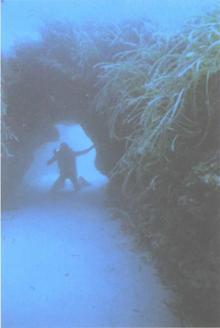 Underworld: The Mysterious Origins of Civilization
Underworld: The Mysterious Origins of Civilization The Master Game: Unmasking the Secret Rulers of the World
The Master Game: Unmasking the Secret Rulers of the World America Before
America Before Entangled
Entangled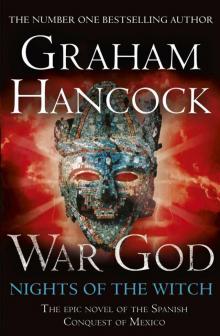 War God: Nights of the Witch
War God: Nights of the Witch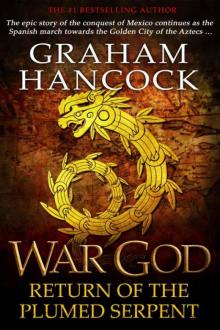 War God: Return of the Plumed Serpent
War God: Return of the Plumed Serpent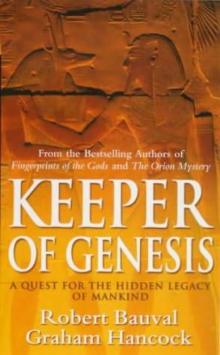 The Message of the Sphinx AKA Keeper of Genesis
The Message of the Sphinx AKA Keeper of Genesis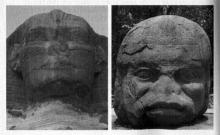 Fingerprints of the Gods
Fingerprints of the Gods The Sign and the Seal
The Sign and the Seal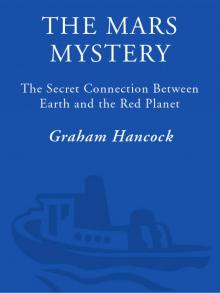 The Mars Mystery: The Secret Connection Between Earth and the Red Planet
The Mars Mystery: The Secret Connection Between Earth and the Red Planet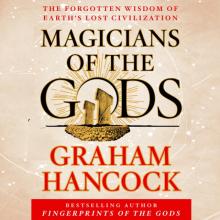 Magicians of the Gods: The Forgotten Wisdom of Earth's Lost Civilization
Magicians of the Gods: The Forgotten Wisdom of Earth's Lost Civilization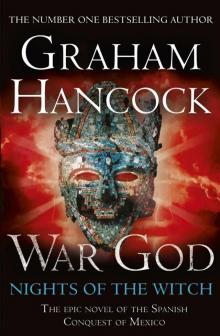 War God
War God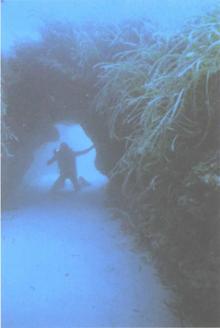 Underworld
Underworld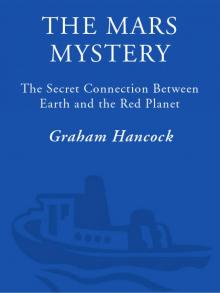 The Mars Mystery
The Mars Mystery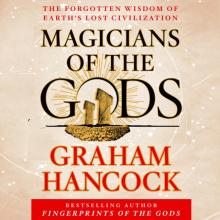 Magicians of the Gods
Magicians of the Gods The Master Game
The Master Game